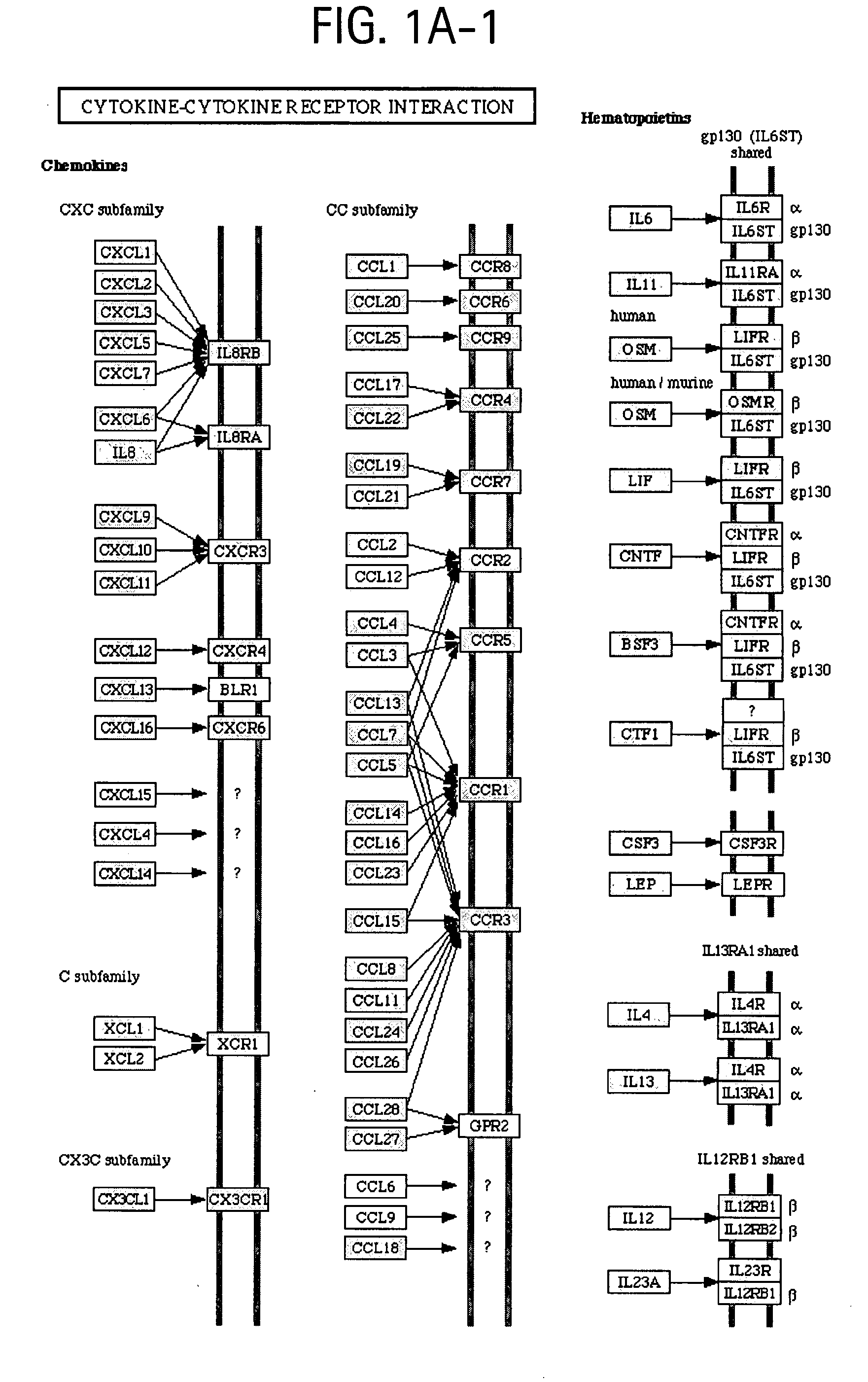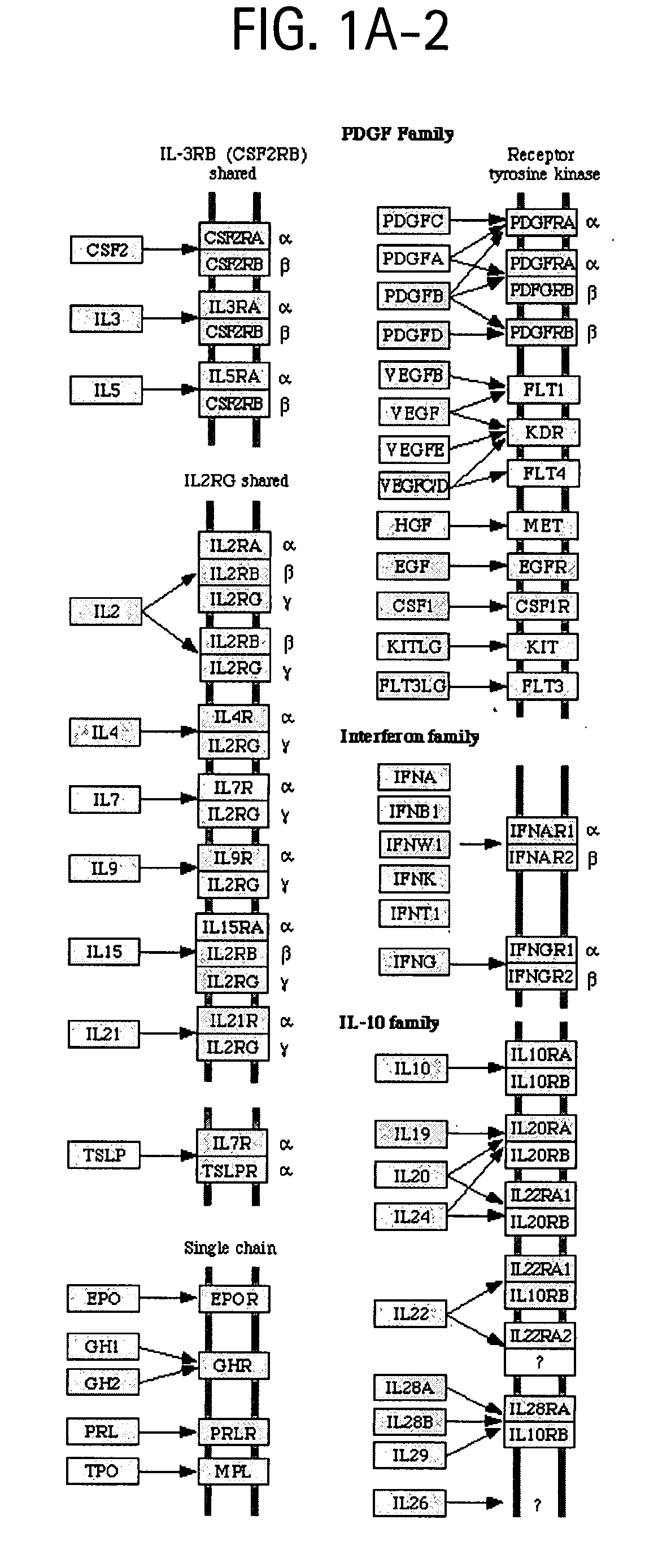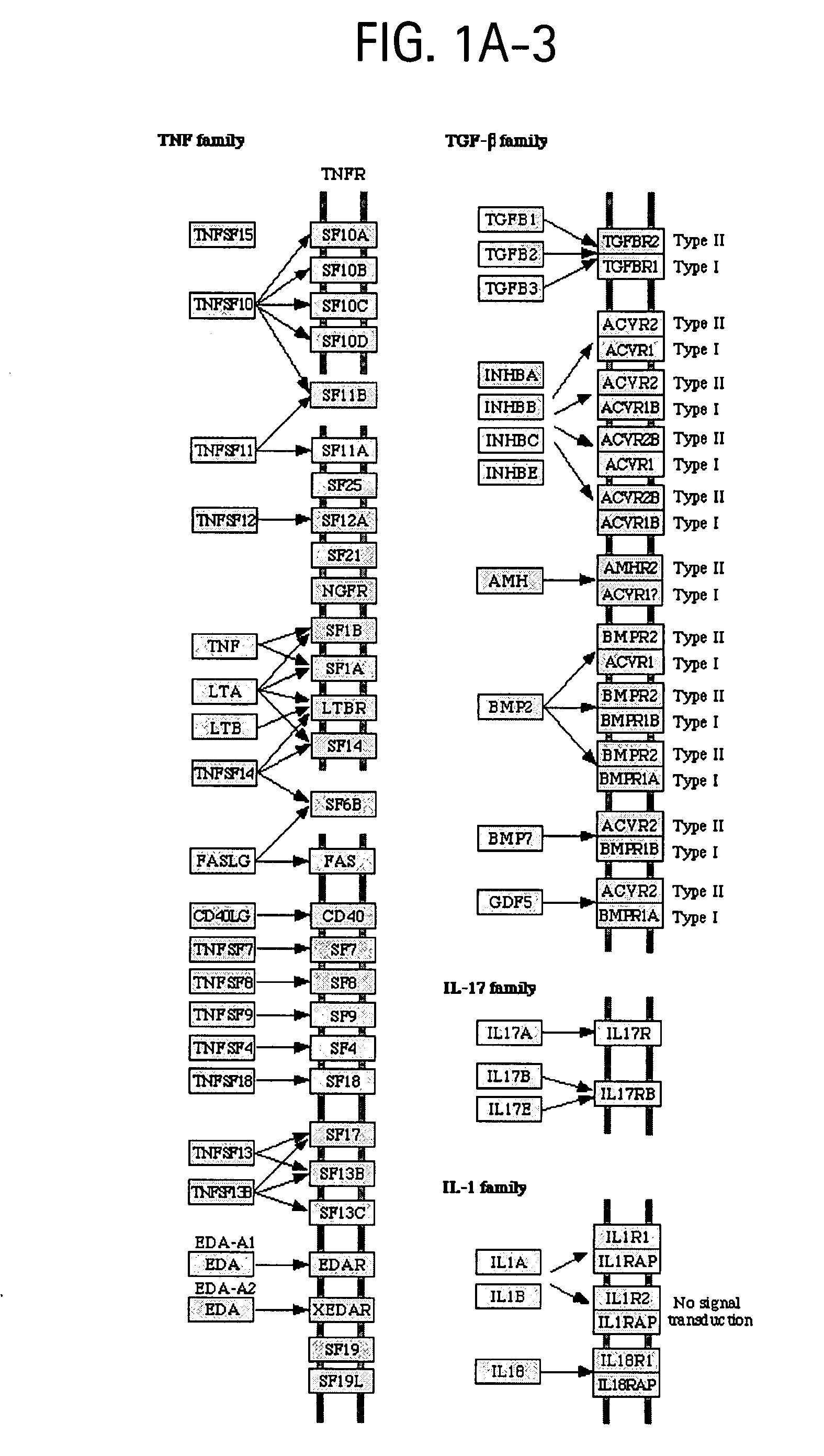Osteoporosis associated markers and methods of use thereof
a technology of osteoporosis and associated markers, applied in the field of osteoporosis associated markers, can solve the problems of imbalance between resorption and formation, so as to increase the risk of bone fractur
- Summary
- Abstract
- Description
- Claims
- Application Information
AI Technical Summary
Benefits of technology
Problems solved by technology
Method used
Image
Examples
Embodiment Construction
, given by way of example, but not intended to limit the invention to specific embodiments described, may be understood in conjunction with the accompanying Figures, incorporated herein by reference, in which:
[0037]FIG. 1A-1AA are graphic illustrations of the molecular pathways listed within the Kyoto University Encyclopedia of Genes and Genomes (KEGG) which feature three or more OSTEORISKMARKERS, identified by their common HUGO gene name abbreviation or alias, in each disclosed canonical pathway.
[0038]FIG. 1A depicts OSTEORISKMARKERS involved in cytokine-cytokine receptor interactions as shown in KEGG pathway hsa04060.
[0039]FIG. 1B depicts OSTEORISKMARKERS involved in neuroactive ligand-receptor interactions as shown in KEGG pathway hsa04080.
[0040]FIG. 1C depicts OSTEORISKMARKERS involved in mitogen-activated protein kinase (MAPK) interactions as shown in KEGG pathway hsa04010.
[0041]FIG. 1D depicts OSTEORISKMARKERS involved in Janus kinase-signal transducers and activators of trans...
PUM
| Property | Measurement | Unit |
|---|---|---|
| period of time | aaaaa | aaaaa |
| bone mass | aaaaa | aaaaa |
| body mass index | aaaaa | aaaaa |
Abstract
Description
Claims
Application Information
 Login to View More
Login to View More - R&D
- Intellectual Property
- Life Sciences
- Materials
- Tech Scout
- Unparalleled Data Quality
- Higher Quality Content
- 60% Fewer Hallucinations
Browse by: Latest US Patents, China's latest patents, Technical Efficacy Thesaurus, Application Domain, Technology Topic, Popular Technical Reports.
© 2025 PatSnap. All rights reserved.Legal|Privacy policy|Modern Slavery Act Transparency Statement|Sitemap|About US| Contact US: help@patsnap.com



